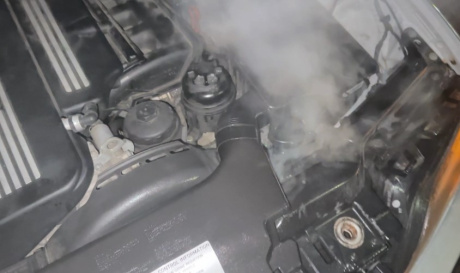
The optimal coolant temperature ranges between 194 and 212 degrees Fahrenheit. A precise degree-by-degree display is not necessary – it suffices if the needle is in the middle of the gauge. In some vehicle models, however, the needle is slightly below the middle. Some models from renowned manufacturers have omitted the temperature gauge for years (E90 drivers will be familiar with this), but even here, the temperature can usually be determined via the onboard computer, albeit in a somewhat cumbersome way.
What to do when the temperature rises?

If the temperature rises, pull over to the right and check the coolant level. Caution is advised here, as the coolant might already be boiling hot and could shoot out when opening the expansion tank. If there is indeed a shortage of coolant, water can be added as a temporary measure to get the system running again. If the cause lies elsewhere, continuing the journey can be considered using the following trick:
An effective method to cool down the engine at least a bit is to turn the heater to its maximum setting. As long as the temperature needle is not in the red zone, it's possible to continue driving while constantly monitoring the temperature gauge. It's advisable to take the longer route via highways/country roads and avoid city traffic (forgoing overtaking maneuvers and high speeds). If this trick doesn’t help, unfortunately, a call to the roadside assistance service will be necessary, as the damage to the cooling system might be too advanced.
However, if the temperature stabilizes back to normal, it's advisable to occasionally pull over to check and, if necessary, top up the coolant. It should be obvious that this is not a permanent solution and does not replace a visit to the workshop soon.
See also:
Same articles

Understanding Vehicle Inspection and Verification Services: Why They Matter for Every Driver
GuidesVehicle inspection and verification services are an essential but often overlooked part of keeping roads safe and cars legally compliant. Most people only think about inspections when it’s...
KLIFEX Brand Overview: High-Quality Automotive Repair Kits for Affordable Repairs
GuidesThe automotive aftermarket has long needed solutions that combine reliability, durability, and affordability. Many car enthusiasts and services are looking for a way...
Fast, Reliable Vehicle Emissions & Inspection Services Made Simple
GuidesFast, reliable emissions and inspection services are essential for keeping vehicles road-ready, compliant with environmental regulations, and safe for daily driving. If you’re looking for quick...

